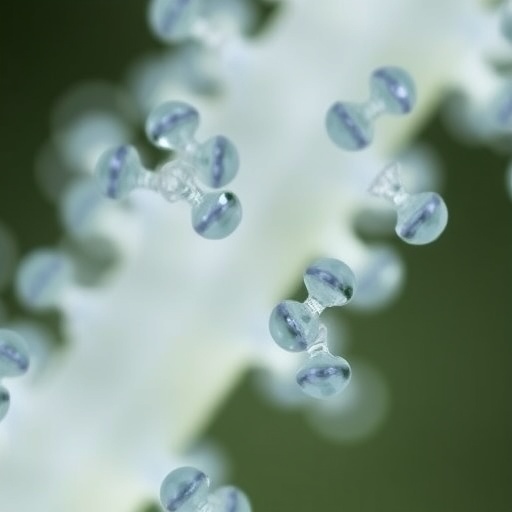In the realm of medicinal chemistry, researchers are continuously on the lookout for innovative compounds that can effectively combat fungal infections. One promising area of study has emerged around isoquinoline derivatives, particularly those featuring an oxime moiety. A recent article by Jin, Chen, Long, and colleagues, published in Molecular Diversity, outlines their groundbreaking research into these novel antifungal agents, detailing the rationale behind their design, the intricacies of their synthesis, and the mechanisms by which they exert their antifungal effects.
Fungal infections pose a significant threat to both human health and agriculture, leading to substantial morbidity and mortality worldwide. The increasing prevalence of drug-resistant fungal species highlights the urgent need for new treatments. Traditional antifungal agents often come with limitations, including toxicity, side effects, and the rapid emergence of resistance. This has propelled scientists to explore new chemical frameworks, with isoquinoline derivatives emerging as viable candidates in the search for more effective antifungal therapies.
The research team’s primary objective was to synthesize a series of isoquinoline derivatives that incorporate an oxime functional group. Previous studies have indicated that oxime-containing compounds can exhibit varied biological activities, making them attractive scaffolds for the development of antifungal agents. By leveraging the unique structural characteristics of isoquinoline and the biological potential of oxime moieties, the researchers set out to create compounds with enhanced antifungal properties.
The synthesis of these novel isoquinoline derivatives involved a multi-step process that required careful optimization of reaction conditions. The team employed several synthetic methodologies, including cyclization and functional group modifications, to achieve the desired compounds. Each step of the synthesis was meticulously monitored, and the products were characterized using advanced analytical techniques such as nuclear magnetic resonance (NMR) spectroscopy and mass spectrometry. This rigorous approach ensured high purity and structural integrity of the final antifungal agents.
As the research team progressed, they conducted a series of antifungal assays to evaluate the bioactivity of their synthesized isoquinoline derivatives. These assays were designed to assess the compounds’ effectiveness against a broad spectrum of fungal pathogens, including clinically relevant strains known for their resistance to conventional antifungals. The results were promising, with several derivatives displaying potent antifungal activity, indicating their potential as therapeutic agents.
One of the intriguing aspects of this study is the detailed mechanistic investigation undertaken by the researchers. They sought to understand how these novel compounds interact with fungal cells at the molecular level. By employing techniques such as molecular docking studies and microscopy, the team was able to elucidate the binding interactions between the isoquinoline derivatives and key cellular targets within the fungi. This level of detail is crucial for refining the design of compounds and improving their effectiveness.
Furthermore, the researchers identified potential pathways through which these antifungal agents may disrupt fungal cell function. For instance, it was discovered that certain isoquinoline derivatives could interfere with critical biochemical processes, such as ergosterol biosynthesis, a vital component of the fungal cell membrane. By targeting this pathway, the compounds were able to induce cell membrane damage, ultimately leading to cell death in susceptible fungal strains.
The implications of these findings extend beyond academic interest. Given the rising incidence of fungal infections and the associated healthcare burdens, the development of more effective antifungal agents is of paramount importance. The research by Jin and colleagues not only contributes to the scientific literature but also holds promise for future therapeutic applications, providing a possible avenue for addressing the growing challenge of fungal resistance.
Although the study underscores the potential of these isoquinoline derivatives as antifungal agents, it also highlights the ongoing challenges within drug development. Depending on the compound’s molecular structure, variations in efficacy and toxicity profiles can arise. Therefore, further studies will be necessary to comprehensively evaluate the safety and efficacy of these new agents in clinical settings. Such evaluations will be critical in determining the viability of these compounds as candidates for further development.
In conclusion, the work by Jin, Chen, Long, and their team represents a significant stride in the quest for new antifungal agents by presenting an innovative class of compounds. Their careful consideration of the design, synthesis, and mechanism of action provides a solid foundation for future research endeavors. As the battle against fungal infections continues, the insights gleaned from this study may accelerate the discovery of effective treatments, offering hope to countless individuals affected by these invasive pathogens.
This exploration into isoquinoline derivatives containing oxime moieties embodies the spirit of scientific discovery, showcasing how targeted research can yield promising new avenues for combating global health threats. The ongoing research and potential clinical applications stemming from this study will undoubtedly attract the attention of pharmaceutical developers and researchers alike, driving forward the urgent need for effective antifungal strategies in the face of emerging resistance.
Subject of Research: Antifungal agents using isoquinoline derivatives.
Article Title: Design, synthesis, and mechanism study of novel isoquinoline derivatives containing an oxime moiety as antifungal agents.
Article References:
Jin, Y., Chen, F., Long, Y. et al. Design, synthesis, and mechanism study of novel isoquinoline derivatives containing an oxime moiety as antifungal agents.
Mol Divers (2025). https://doi.org/10.1007/s11030-025-11317-0
Image Credits: AI Generated
DOI: 10.1007/s11030-025-11317-0
Keywords: Isoquinoline derivatives, antifungal agents, oxime moiety, drug resistance, synthesis, mechanism of action.




